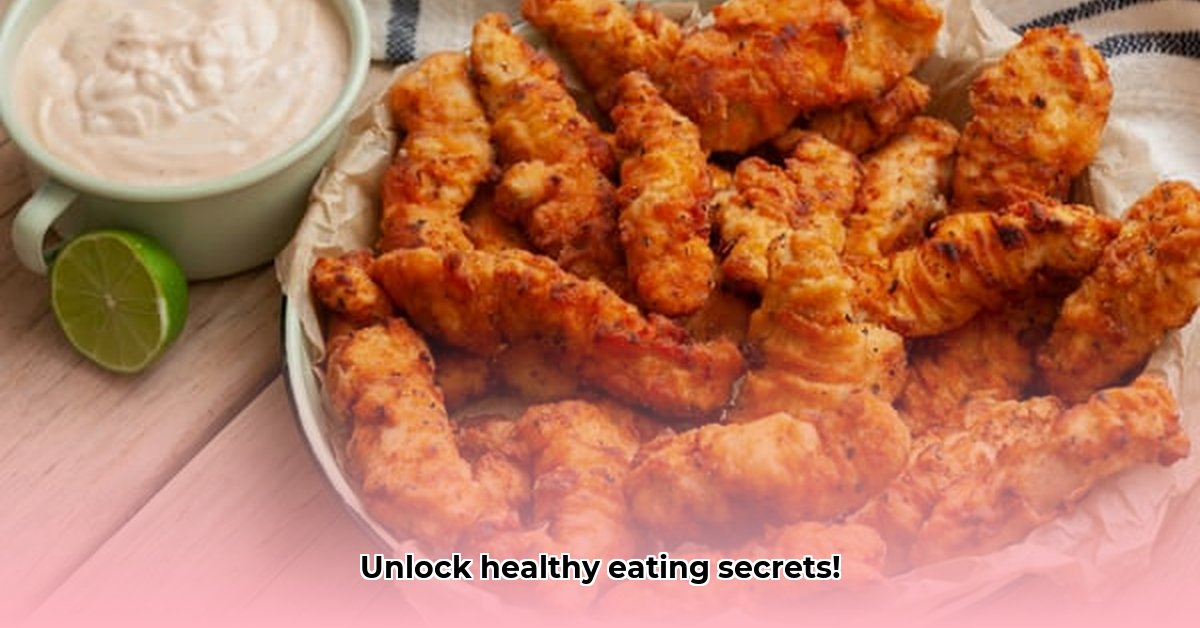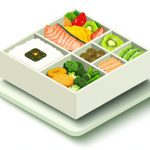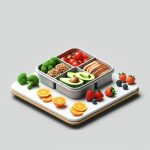Confused about healthy eating? So many diets, so much conflicting information! This guide simplifies everything, showing you how to eat better without feeling deprived or overwhelmed. We’ll ditch the fad diets and focus on easy, sustainable changes you can actually stick with. Think swapping refined grains for whole grains, adding more veggies to your plate, and making smart choices at the grocery store. We’ll cover the basics of a balanced diet in simple terms, explore delicious recipes that are both healthy and satisfying, and share tips from real people who’ve made lasting changes. For a helpful shopping guide, check out this healthy food list. Ready to feel better and eat better? Let’s go!
Good Eats Healthy Living: A Simple Guide to Better Nutrition and Sustainable Eating Habits
Let’s face it: figuring out healthy eating can feel like navigating a maze. There’s so much conflicting information out there – fad diets, confusing nutrition labels, and marketing ploys that promise miracles. But what if I told you that eating well doesn’t have to be complicated? This guide will help you unlock the secrets to a healthier, happier you, one delicious bite at a time. Let’s explore the cornerstones of balanced nutrition and sustainable eating habits, empowering you to make informed choices for a healthier lifestyle.
Ditch the Diet Mindset, Embrace Lasting Habits for Long-Term Health
Forget those restrictive diets that leave you feeling hungry and deprived! The key isn’t a quick fix; it’s about creating sustainable, long-term habits. Think tiny, manageable changes instead of drastic overhauls. You’ll find it much easier to stick with! What’s one small thing you could do today to improve your diet and promote long-term health?
- Strategic Addition: Instead of focusing on what to cut out, start by adding nutritious foods to your current meals. Think of it as “plus-ing” your diet. An extra serving of veggies with dinner? A piece of fruit as an afternoon snack? According to the Mayo Clinic, small additions can make a surprisingly big difference.
- Prioritize Whole Foods Consumption: The foundation of healthy eating is whole, unprocessed foods. This means focusing on fruits, vegetables, whole grains (like brown rice and oats), lean protein sources (fish, chicken, beans, lentils), and healthy fats (avocados, nuts, olive oil). These foods are naturally packed with essential nutrients and fiber, keeping you full and satisfied. What are some of your favorite whole foods to support healthy eating?
- Become a Food Label Analyst: Learn to read food labels effectively. Pay close attention to serving sizes (they’re often smaller than you think!), added sugars, and sodium content. Becoming a savvy label reader can help you make better choices at the grocery store and in restaurants. It’s like gaining a superpower for your health!
Unleash the Power of Plant-Based Nutrition
Eating more plant-based foods isn’t just a trend; it’s a genuinely effective strategy for improving your overall health and well-being. Fruits, vegetables, beans, lentils, and whole grains are nutritional superstars! They’re bursting with vitamins, minerals, fiber, and antioxidants, all essential for a healthy body. Did you know that a diet rich in fruits and vegetables is associated with a reduced risk of chronic diseases like type 2 diabetes, heart disease, and certain cancers, according to the World Health Organization?
- Embrace Color with Fruits and Vegetables: Aim for a vibrant, colorful plate. A rainbow of fruits and vegetables means a wider range of nutrients. Red bell peppers are rich in Vitamin C, leafy greens boast iron, and blueberries overflow with antioxidants.
- Fiber-Rich Diet: Fiber aids digestion and helps you feel full and satisfied, making it easier to manage your weight. It’s abundant in fruits, vegetables, and whole grains, promoting a healthy gut and balanced blood sugar levels.
- Mindful Meat Selection: Lean protein sources like fish and chicken are great, but you certainly don’t need meat at every meal. Plants offer plenty of protein too with the additional benefits of fiber and phytonutrients! Explore tofu, tempeh, quinoa, and a variety of beans and lentils as amazing alternatives.
Healthy Fats: Essential Building Blocks for Optimal Brain Function
Don’t shy away from fats! Healthy fats are crucial for brain function, hormone regulation, nutrient absorption, and overall well-being. Make sure to include these good-for-you fats in your diet. Incorporating healthy fats can improve cognitive function and support a healthy heart.
- Avocados for Heart Health: These creamy fruits are packed with monounsaturated fats and add a delicious richness to meals and are a great source of potassium!
- Nuts and Seeds as a Nutrient Source: Almonds, walnuts, chia seeds, and flaxseeds provide healthy fats along with fiber and other nutrients. Walnuts, in particular, are an excellent source of omega-3 fatty acids, crucial for brain health.
- Olive Oil for Cooking: Opt for extra virgin olive oil when cooking or making salad dressings. It’s a fantastic source of monounsaturated fats and antioxidants. Drizzle it over salads, vegetables, or use it for sautéing.
Hydration: The Unsung Hero of Overall Health
Water is often overlooked, but it’s absolutely vital for countless bodily functions. Dehydration can cause fatigue, headaches, and even impact your cognitive function. Aim to drink plenty of water throughout your day. Carry a reusable water bottle to make it easier to stay hydrated. Staying hydrated is crucial for everything from energy levels to clear skin and a healthy digestive system. The National Academies of Sciences, Engineering, and Medicine recommends about 15.5 cups (3.7 liters) of fluids a day for men and about 11.5 cups (2.7 liters) of fluids a day for women. Remember that this includes fluids from water, beverages, and food.
Practical Tips for Easier Healthy Eating Habits
- Meal Prep Mastery: Preparing meals and snacks ahead of time can save you time and make it easier to make healthy choices when you’re short on time. According to Healthline, weekly meal prepping is key to maintaining a healthy diet.
- Smart Snacking for Steady Energy: Keep healthy snacks on hand – fruits, vegetables, nuts – to avoid unhealthy impulse buys when hunger strikes. A handful of almonds, baby carrots with hummus, or a piece of fruit can keep you satisfied between meals.
- Listen to Your Body’s Signals: Pay attention to your hunger and fullness cues. Don’t force yourself to eat when you’re not hungry, and stop eating when you feel comfortably satisfied. Mindful eating is key!
Personalizing Your Path to Better Eating and Overall Health
There’s no one-size-fits-all approach to healthy eating. Every individual is different, with varying tastes, preferences, dietary needs, and lifestyles. Experiment with different foods and recipes to find what you enjoy and what works best for you. Consider consulting with a registered dietitian or nutritionist for personalized guidance. It’s a journey, not a race. Be patient with yourself, celebrate your successes, and enjoy the process of discovering what makes you feel your best!
| Food Group | Examples | Key Benefits |
|---|---|---|
| Fruits | Berries, apples, bananas, oranges | Vitamins, minerals, fiber, antioxidants, sweetness |
| Vegetables | Leafy greens, broccoli, carrots, peppers | Vitamins, minerals, fiber, antioxidants, low calories |
| Whole Grains | Oats, quinoa, brown rice, whole-wheat bread | Fiber, complex carbohydrates, B vitamins, sustained energy |
| Lean Protein | Fish, chicken, beans, lentils | Muscle building, satiety, various nutrients |
| Healthy Fats | Avocados, nuts, seeds, olive oil | Brain function, hormone production, energy, heart health |
Remember, small, consistent changes accumulate to big results over time. Start small, celebrate your progress, and enjoy the journey towards a healthier, happier you!
How to Incorporate More Whole Foods into a Busy Lifestyle
Key Takeaways:
- Strategic Meal Planning: Weekly meal prepping is key to how to incorporate more whole foods into a busy lifestyle.
- Embrace Convenience: Frozen and canned options (without added sugars/preservatives) are your friends. They’re time-savers.
- Master a Few Go-To Meals: Having 3-5 healthy meals you love simplifies your life—and reduces food waste.
- Smart Swaps: Gradually replace processed foods with whole-food alternatives. It’s a marathon, not a sprint!
Making Whole Foods Work for Your Schedule: Practical Strategies for Healthy Meals
Let’s face it: life gets hectic. Finding time to cook healthy meals feels impossible sometimes. But it doesn’t have to be! There are ways to seamlessly integrate nutritious whole foods into even the busiest schedules.
The secret? Strategic planning. It is all about making small changes that add up to big results. Embrace flexibility and find strategies that align with your lifestyle.
Embrace the Power of Meal Prepping for Time Management
This isn’t about spending hours in the kitchen. It’s about smart preparation. Set aside 2-3 hours one day a week to chop vegetables, cook grains, and prepare proteins. Portion them into containers for quick, healthy meals throughout the week. Think of it as an investment in your health and your time. Pack lunches the night before. Make overnight oats for a grab
- The Best Bento Box Price For Your Perfect Packed Lunch - December 15, 2025
- Bento Box Shopping Tips for Smart and Stylish Lunch Prep - December 14, 2025
- Bento Box Trays Streamline Restaurant Meal Presentation and Transport - December 13, 2025










